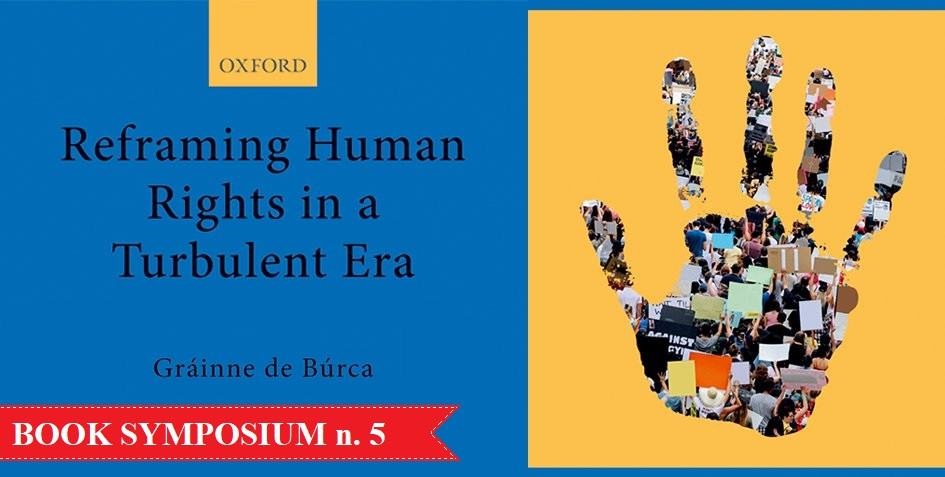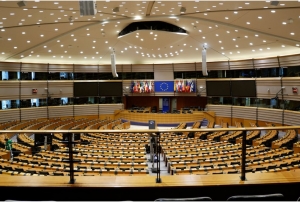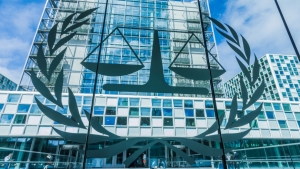I am grateful to the editors, Lucas Lima, Lucas Lixinski, and Fabio Morosini, and to the three contributors, Fernanda Frizzo Bragato, Juliana Cesario Alvim Gomes and Mukami Wangai, for organizing and contributing to this mini symposium on my recent book, Reframing Human Rights in a Turbulent Era. I very much appreciate their insights, critiques and suggestions, and I particularly value the various Global South perspectives they bring to the topic.
Each of the authors has engaged thoughtfully with the book, and has raised a number of questions about issues which were omitted or not addressed, about the book’s choice of case studies, the generalizability (or otherwise) of the lessons drawn from those studies, and the testability (or otherwise) of experimentalism as an explanatory theory.
Fernanda Frizzo Bragato notes that the book begins with the observation that international human rights law has been criticized by many as ineffective, and that it is not self-enforcing, but that the book does not explore its uneven effectiveness in any detail. She argues that from a de-colonial perspective, the reason international human rights law does not work is because so many of those whose rights are affected or denied inhabit the ‘zone of non-being’ – the experience of being Black in an anti-Black colonial world as described by Frantz Fanon. In her view, the violation of human rights is “a selective phenomenon that affects historically subordinate groups”. While I agree with much of what she writes, I would not agree that the book overlooks the position of historically subordinate people. Although the violation of human rights is in a great many contexts a phenomenon that affects historically subordinate groups, and while the three case studies discussed in the book do not cover racially subordinated groups, nonetheless the position of women in highly patriarchal societies and the position of persons with disabilities in many societies (two of the case studies for the book) are very much those of historically subordinate and in many contexts effectively socially invisible categories of people.
Nevertheless, Frizzo Bragato is absolutely right to draw attention to the particular violence of the colonial context, and to the deep and widespread injustices long experienced by racially subordinated groups, as well as other communities in the Global South, as far as the effectiveness or ineffectiveness of human rights is concerned. Mukami Wangai in fact also notes that “the most underdeveloped parts of the globe remain the most affected populations” as far as contemporary human rights challenges such as climate change, illiberalism, Covid-19 and socio-economic inequality are concerned. An array of academic literature has indeed begun to fill in parts of the picture as far as effective human rights mobilization in contexts of racial, cultural and economic oppression in the Global South is concerned, with powerful examples of influential Indigenous peoples’ campaigns [1] and peasants’ rights movements [2], increased engagement with international human rights of groups who have experienced racism [3], and sharper awareness of the colonial and other dimensions of disempowerment as far as human rights advocacy is concerned [4]. But it is undoubtedly true, as the two reviewers intimate, that a great deal more work– both in terms of advocacy and in terms of scholarship focused on the colonial and Global South dimensions – needs to be done in this respect.
Juliana Cesario Alvim Gomes in her comments begins by asking a question she has posed elsewhere in her writings, namely whether law perpetuates exclusion, reinforces the exclusionary state or weakens political mobilization. In response to those questions my answer, drawing in part on the studies in the book, is: sometimes, but not always; and human rights law in particular has regularly been invoked by those who have been oppressed or subordinated as an effective part of their political mobilization and to challenge exclusion. Alvim Gomes suggests that the three case studies in the book raise more questions than provide answers, and the questions they raise for her include (i) whether changes in government influenced the receptivity of a state to human rights (ii) whether human rights treaty ratification or participation of states in periodic reporting display a governmental predisposition to human rights that would be more a cause of the adoption of progressive measures than a consequence of ratification (iii) whether and how counter-movements operated and how setbacks were incorporated into the strategy of different organizations and (iv) whether countries were/are more influenced by changes in the domestic law of other states rather than by international human rights law. And while the book did not set out to answer these specific questions, it does I believe contain at least partial answers to some of them. But let me begin by reiterating what is stated at the outset of the book: that any attempt to demonstrate causation (e.g. that ratification of a treaty ‘caused’ a later domestic legal reform; or that human rights advocacy caused social or political change) in a strong sense would be a fraught and possibly even futile exercise, as is evident from the debate amongst empirical scholars on the likely impact (or not) of human rights treaty ratification on human rights compliance. [5] When activists mobilize around human rights in an effort to bring about change, they do so within a complex political and social context, and any changes that do eventually come about will invariably have been influenced by a wide range of factors. Hence the question whether governments are more influenced by changes in the domestic law of other states rather than by human rights law may not be susceptible to a sharp answer. It is likely that governments are influenced in different ways by both of these sets of factors, although sometimes – as in the case of Ireland and abortion law – a state may remain for a long time an outlier in relation to a given issue even in comparison to most or all of the other states in its region, and may choose to do this as a deliberate policy.
Alvim Gomes also asks whether a state’s choice to ratify a human rights treaty and to participate in the reporting process suggest that the state already has a predisposition to respect human rights, and that it is this predisposition rather than social mobilization and human rights campaigning that leads the state to introduce progressive legislation. In the first place, I am skeptical as to whether an either-or answer can be given to this question. It is undoubtedly true that when a government ratifies a human rights treaty and subscribes to its implementation mechanism, that government is signaling at least its formal commitment to the substantive obligations contained in the treaty. Nevertheless, many if not most governments do not ratify human rights treaties in the belief that they are in violation of the treaty at the time, or in the expectation that its ratification will necessitate major domestic reforms. Take the example of Ireland and the Convention on the Rights of the Child (CRC). In the first place, the official policy of the Irish government is that treaties should not be ratified until domestic law is already in compliance with their terms, which means that the government did not intend or expect that extensive advocacy for changes to the law and Constitution to promote children’s rights would ensue as a consequence of ratification of the CRC. And even if this official policy position is not shared by other states, it seems highly likely that many governments when choosing to ratify a treaty do so in the belief that it will not require them to introduce extensive reforms. Secondly, even if a government’s ratification of a human rights treaty can be taken as an indication of a predisposition to comply with the terms of that treaty, few governments anticipate or welcome the kinds of changes for which advocacy groups mobilize and bring pressure. These are often controversial and socially contested reforms, even within the government itself – as with rape law and family law reforms in Pakistan, or abortion law reform in Ireland. And the fact that governments resist and delay for years if not decades in introducing the reforms for which advocacy groups mobilize, suggests that the idea that their ratification of a treaty indicates they have a predisposition to support human rights and that it is this predisposition rather than sustained mobilization, advocacy and pressure that eventually brings about contested reform, seems improbable.
Alvim Gomes also suggests that it would be instructive to examine some comparative case studies from other countries in which similar treaties were ratified and where the state engaged in reporting and was subject to advocacy mobilizing for change, but where the progressive change did not come about. She is certainly right that there is a lot to be learned from failures as well as successes, and that examining cases in which human rights campaigns were ultimately unsuccessful would be likely to yield interesting lessons. The reason I chose three case studies in which human rights campaigns had enjoyed some success was because I wanted to study the mechanisms of change more closely – to examine what role exactly human rights and human rights laws had played in the process of bringing about legal and social reform. Hence I chose examples in which human rights campaigns appeared to have had some success in bringing pressure to bear on the government to introduce change. On the other hand, the nature and extent of the successes in each of the three case studies were of different degrees and kinds. The array of legal and social reforms in relation to children’s rights and reproductive rights in the Irish campaigns was very extensive, whereas the changes studied in relation to disability rights and inclusive education in particular in Argentina were quite focused and specific, and also partial. Further, in the case of the Pakistan study, for example, while the various gender equality laws and institutions introduced were important steps, there is clearly a very long way to go before several of the legal reforms actually translate into concrete social and political reform. Hence the successes of the various campaigns were at best limited and partial, and there were many frustrating failures too, in the form of laws which were not properly implemented and institutions which were not adequately resourced.
Alvim Gomes also rightly draws attention to the internal political situation of the countries in which domestic mobilization for human rights is taking place, and asks about the relevance of changes taking there, as opposed to the input of international institutions like treaty bodies, other UN actors, and regional courts. It is true that domestic changes, including changes of government and the impact this had on receptiveness to human rights arguments, are described more in some of the case study examples than in others, but it nonetheless seems clear that domestic political and institutional changes are highly relevant to the ways in which human rights advocacy can take place and have traction. In the Pakistan study, for example, the change from the regime of General Zia- ul- Haq to the regime of Musharaf was very salient for domestic progress on human rights; just as in Argentina, the government of Nestor Kirchner was more favorable to various human rights campaigns than that of its predecessor, even though the pursuit of neoliberal policies across various Argentinian governments under the influence of international finance institutions had crushing implications for economic and social rights. Similarly, apart from changes in government, it is also clear from aspects of the case studies that changes in other domestic institutions – the creation of an Ombudsman for Children in Ireland, for example, and the national and provincial Commissions on the Status of Women in Pakistan) – had definite implications for the promotion of human rights.
Alvim Gomes also helpfully suggests that future research could usefully look further into the tensions and contradictions existing within the participating NGOs, groups and movements and their consequences, as well as examples of counter-mobilization. Some preliminary examples of these tensions are described in the book’s case study of gender justice Pakistan, in which there was a range of very different approaches (including secular vs religious approaches) to the advancement of the rights of women, and in Argentina where support for inclusive education and the abolition of special education was not uniform across groups of persons with disabilities. The case studies of Ireland and Pakistan also provide some examples of the phenomenon of backlash and counter-mobilization, in which certain groups including religious constituencies mobilized to obstruct moves to introduce greater gender equality or to advance reproductive rights. Nevertheless, these first glimpses only hint at the complexity of counter-mobilization and the tensions between groups, and I would join Juliana Cesario Alvim Gomes in encouraging others doing research into human rights movements in various jurisdictions to dig further into these dimensions. In forthcoming research with Katharine Young and others, we begin to examine the moves by religious and conservative political movements to ‘reappropriate’ human rights and human rights law in order to resist extending rights and freedoms to women and LGBTIQ+ communities, among others. [6]
Finally, Alvim Gomes raises a more fundamental question as to whether the case studies were chosen, and the stories told, in a way that would fit the theory offered by the book, rather than in a different way that would test or challenge the theory. This question allows me to clarify, if the book does not adequately do so, that rather than theory-testing by reference to case studies, the book’s aim was to contribute to theory-building, and to use the findings of the case studies to propose an account of the ways in which human rights law takes shape and becomes effective through the engagement of civil society activism with domestic and international law and institutions. The account, which draws on elements of experimentalist governance theory, is partly built from the case studies rather than tested by them. But it is certainly possible that others reading the studies will not be convinced by the account I offer, and I would welcome other research which might test the theory offered, or alternative competing accounts of the various case studies with a view to furthering understanding of what makes human rights law work in practice.
Mukami Wangai, relatedly, suggests that the three case studies may be too few and too distinctive to offer broader lessons for human rights mobilization elsewhere, and that further case studies might usefully be carried out in jurisdictions and contexts which could yield more easily comparable lessons. Again, I welcome this suggestion and hope that others may be prompted by the book’s argument to examine human rights advocacy campaigns in other jurisdictions with a view to understanding the mechanisms and processes by which they succeed in bringing about rights-promoting change, and indeed to question whether the experimentalist framework I have advanced in the book has explanatory purchase.
In conclusion, thank you to all of the contributors for your careful and illuminating engagement with my book, and for your suggestions for future research.
[1] For two recent additions to a rich literature on Indigenous peoples’ human rights struggles, see César Rodríguez Garavito and Carlos Baquero-Días, “Reframing Indigenous Rights: The Right to Consultation and the Rights of Nature and Future Generations in the Sarayaku Legal Mobilization”and Margaret Satterthwaite “Critical Legal Empowerment for Human Rights” in G de Búrca (ed), Legal Mobilization for Human Rights (OUP, 2022 forthcoming).
[2] See e.g. P. Claeys, Human Rights and the Food Sovereignty Movement: Reclaiming Control (2016), and Vandenbogaerde, ‘Localizing the Human Rights Council: A Case Study of the Declaration on the Rights of Peasants’, 16 Journal of Human Rights (2017) 220.
[3] See e.g. E. Tendayi Achiume, “Putting Racial Justice on the International Human Rights Agenda” (2018) 15 SUR (no. 28) 141, S. Parmar “The Internationalisation of Black Lives Matter at the UN” (June, 2020) EJIL Talk!, https://www.ejiltalk.org/the-internationalisation-of-black-lives-matter-at-the-human-rights-council/ and M. Rosino “A Problem of Humanity”: The Human Rights Framework and the Struggle for Racial Justice (2018) 4Sociology of Race and Ethnicity 338.
[4] Sarah Knuckey, Benjamin Hoffman, Jeremy Perelman, Gulika Reddy, Alejandra Ancheita, and Meetali Jain “Power in Human Rights Advocate and Rightsholder Relationships: Critiques, Reforms, and Challenges” (2021) 33 Harvard Human Rights Journal 1
[5] See e.g. the argument of Adam Chilton and Eric Posner, in “Treaties and Human Rights: The Role of Long-Term Trends” (2018) 81 Law and Contemporary Problems 1.
[6] Gráinne de Búrca and Katharine Young, The Appropriation of Human Rights by Reactionary Religious and Political Forces: New Global Trends”, forthcoming.
-

Florence Ellinwood Allen Professor of Law Faculty Director, Hauser Global Law School Director, Jean Monnet Center for International and Regional Economic Law & Justice





